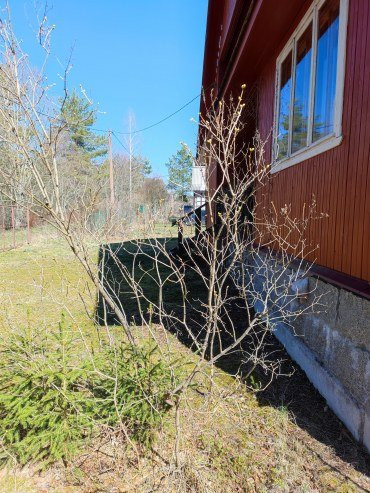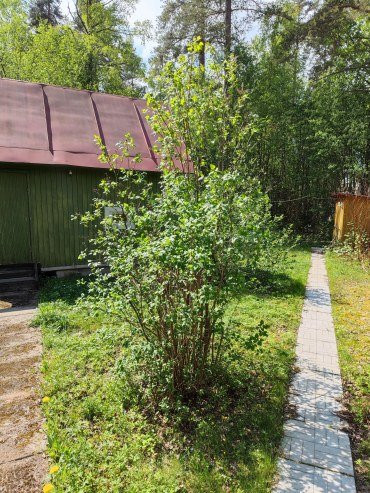Even if you don't have your own garden or vegetable garden, you've probably heard that plants need to be sprayed regularly. We ourselves are not the most experienced gardeners: on our plot of fruit trees there is only one apple tree, which, following a long-standing St. Petersburg tradition, produces from 1 to 3 apples per year, measuring about two centimeters in diameter. However, pests can damage not only fruits and vegetables, so we decided to try using a sprayer on our berry and flower bushes. To do this, we took the GPT DF-B5Li battery garden sprayer for testing.
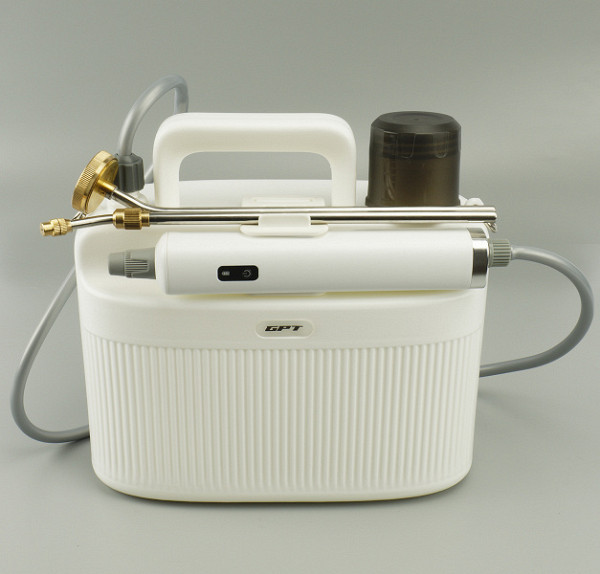
Characteristics
| Manufacturer | Garden & Power Tools |
|---|---|
| Model | DF-B5Li |
| Type | battery garden sprayer |
| Country of Origin | China |
| Guarantee | 12 months |
| Life time * | 24 months |
| Liquid tank capacity | 5 l |
| Operating pressure | 2.5 bar/0.25 MPA |
| Spray nozzle | telescopic 28—50 cm, 0.28 l/min, spraying up to 0.8 m |
| Watering nozzle | length 27 cm, 0.765 l/min |
| Shoulder strap length | 1.4 m |
| Accumulator battery | 3.7 V, 2200 mAh |
| Weight | 840 g |
| Dimensions (W×H×D) | 400×250×150 mm |
| Short hose length | 1m |
| Long hose length | 8 m |
* Contrary to popular belief, this is not the time limit after which the device will necessarily break down. However, after this period, the manufacturer ceases to bear any responsibility for its performance and has the right to refuse to repair it, even for a fee.
Equipment
The device is supplied in a discreet cardboard package without handles.

The box lists the main technical characteristics and capabilities of the device, and on the front there is a photograph of it assembled, in the version with a standard canister.
Having opened the box, inside we found:
- a canister (tank) with a pre-installed mesh filter on the neck, closed with a lid, which can also serve as a measuring cup
- short hose assembly with gaskets
- long (8 m) hose complete with gaskets
- motor-battery unit
- spray nozzle
- watering nozzle
- shoulder strap for canister (tank)
- blue fasteners for long hose
- USB cable with Type-C connector for charging (without charging itself)
- instructions and warranty card

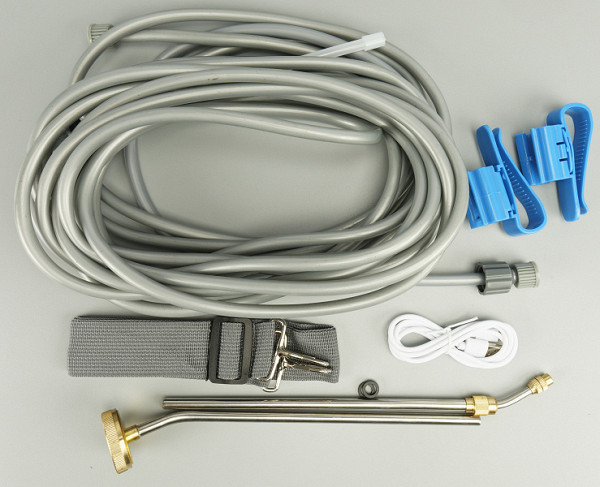
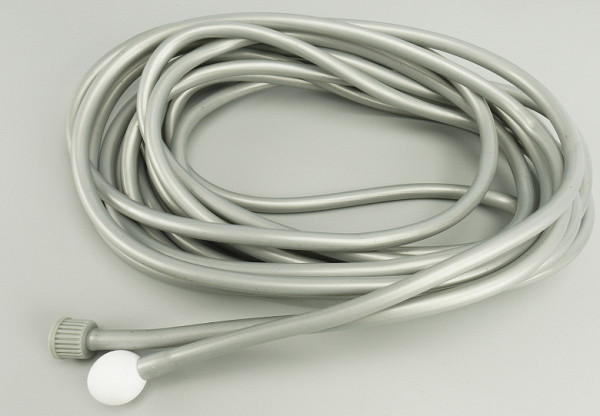


At first sight
Let's be honest: at first this device seems like a child's toy. It’s as if the parents decided to teach their child to take care of the garden from an early age, bought him a canister with a watering can, and let him play.
But then you begin to notice the thoughtfulness and reliability of the design. The spraying nozzle is telescopic, made of high-quality stainless steel (at least it looks that way). The spray nozzle has a wide range of adjustment, and the nozzle and sprayer themselves are made of brass, without the use of plastic.

The watering nozzle is the good old classic “shower” type; no adjustments are provided here.


“Foolproof” is provided: you cannot pour too large a suspension into the tank.
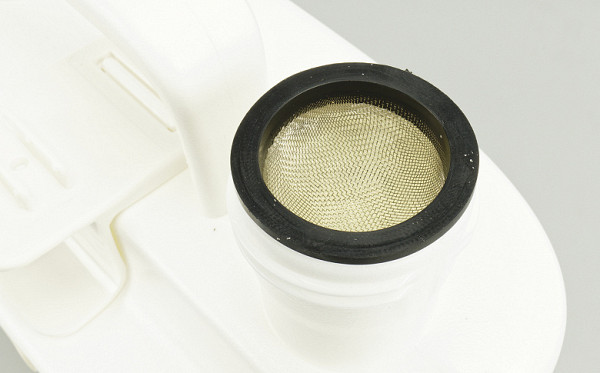
The tank itself has a complex design of the upper part: all the parts of the sprayer and both nozzles can be placed in special grooves. This allows them to be carried along with the canister on a shoulder strap and simplifies storage.
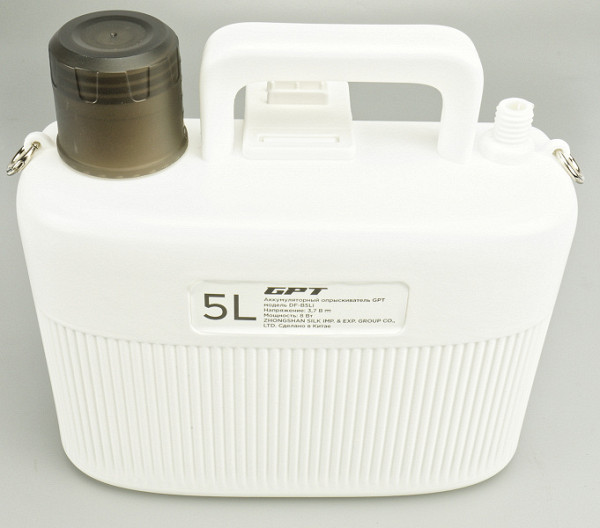
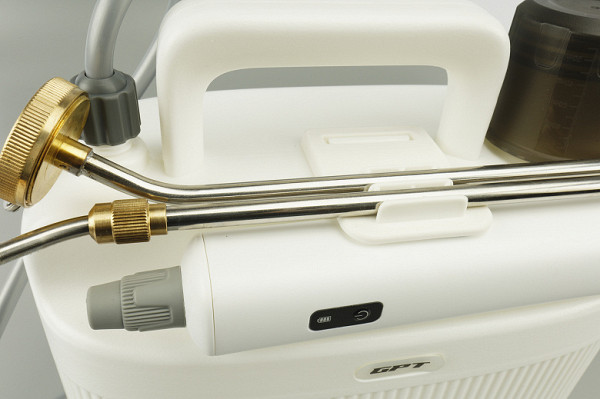
The tank itself has a complex design of the upper part: all the parts of the sprayer and both nozzles can be placed in special grooves. This allows them to be carried along with the canister on a shoulder strap and simplifies storage.
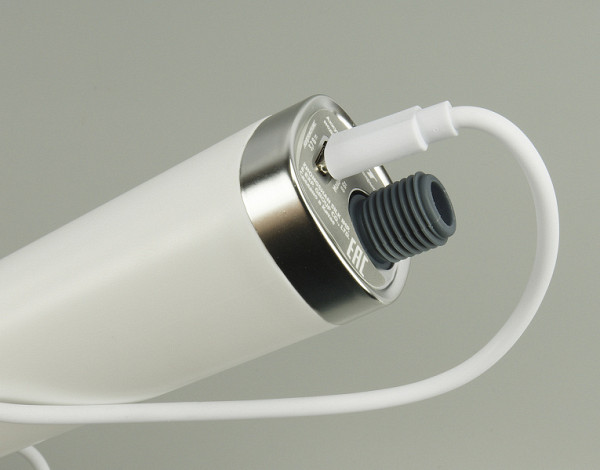
The cord seems to be standard: we tried connecting other cords to the device, and it successfully charged from them.
The long hose, designed for use with a non-standard tank, has a simple ball-shaped strainer at the end.
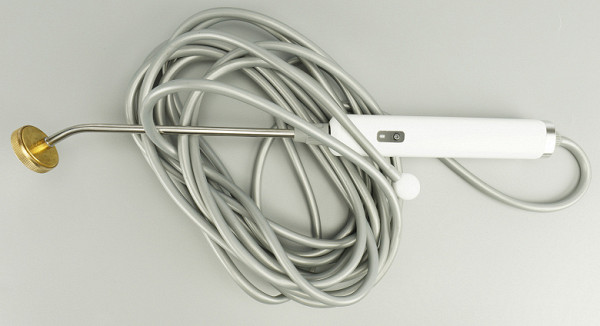
In general, gradually “delving into” the design of the device, somehow imperceptibly for ourselves, we came to the conclusion that it is not that much of a toy — just well thought out, compact and cute.
Instructions
The instruction manual focuses on the descriptive part: design, equipment, detailed instructions for assembling the device (including instructions for installing rubber gaskets), precautions, storage and transportation conditions...
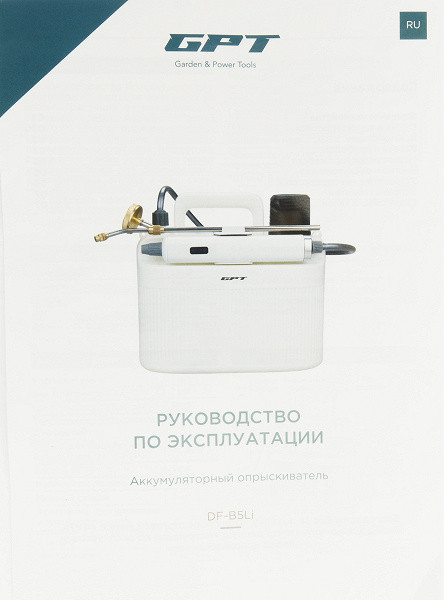

In general, due to the small volume, it is useful to read the instructions once, but we cannot say that we found any revelations there: we knew most of the information before.
Management
The device has essentially one control: a button on the motor unit. One press turns the pump on, the second turns it off. When turned off, the button does not light up; when turned on, it lights up green (normal state) or red (battery will run out soon). When charging, the button flashes green, and when charging is complete, it glows solid green.
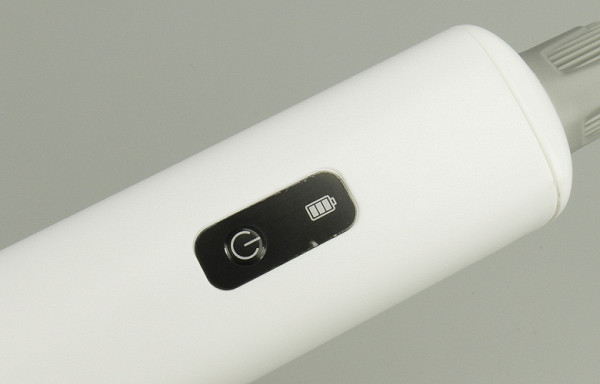
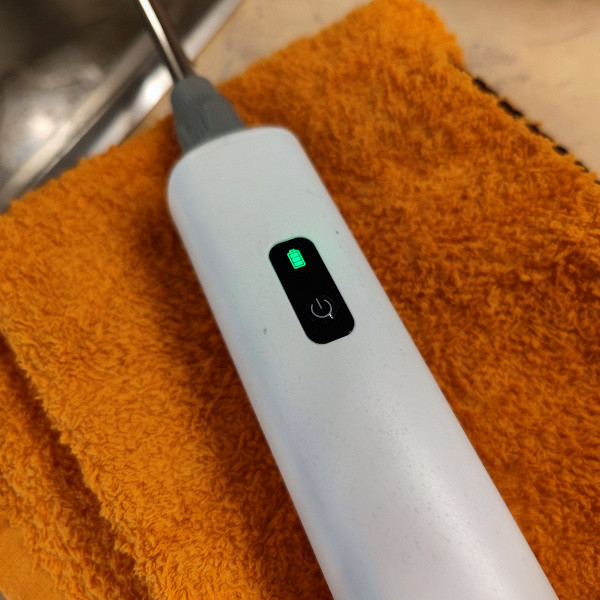
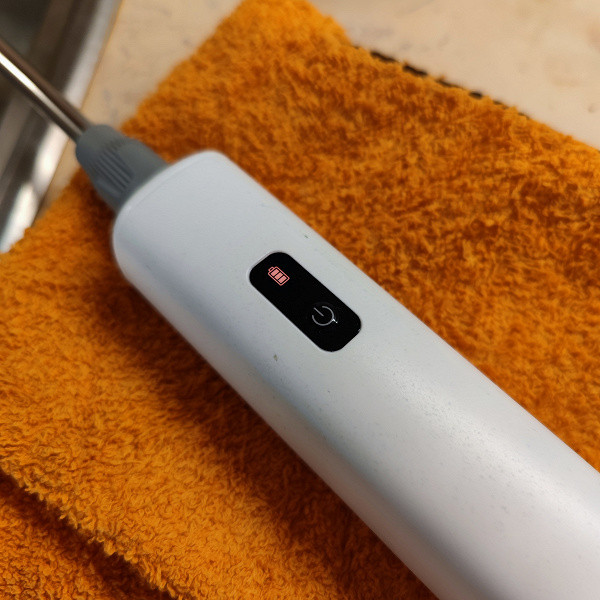
The device has no other controls.
Exploitation
Here we usually write about non-obvious situations and problems that arose during the operation of the device. Ideally, this section should be empty, which would make it easy and intuitive to use. However, for the hero of this review, although it will not be empty, it will be very short.
The charging socket is equipped with a rubber plug to protect it from water during operation. A small complaint arises here: the plug does not have a “string” so that it can be tied and not lost. We lost the plug on the first day, simply forgetting where we put it after removing it. Later, however, they found it.
The second point concerns the charge indicator. From the photograph it may seem that it is three-segmented. But that's not true. Behind the “three-segment” button there is one LED that can glow green and red or flash. That's all the indication.
And now we offer you to look at photographs of various operating modes. Here, one photo will say much more than a paragraph of text.
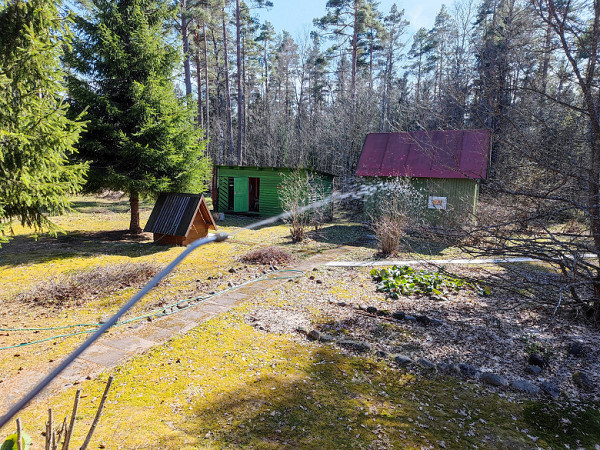
Spray nozzle, narrow jet. It hits almost a meter (a little less), but you will have to aim quite carefully with such a narrow cone, especially if up. And the drops are too large.
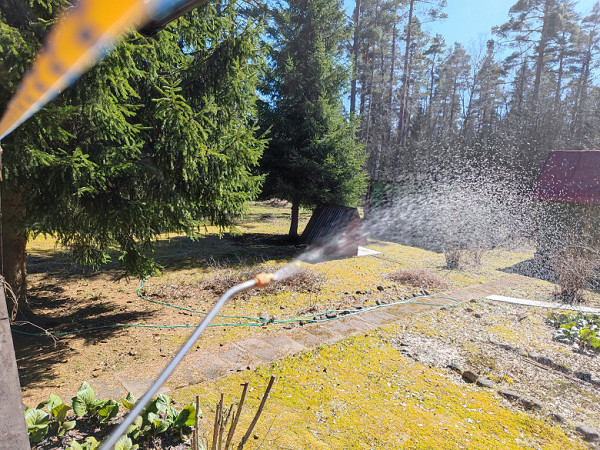
Spray nozzle, slightly wider cone. It reaches about 50-60 cm, but this is much more similar to what we call “spraying”: we work “in areas”.

Spray nozzle, widest cone. In this mode, a cloud of tiny drops swirls almost around the nozzle (15-20 cm) and is blown away in any direction by the slightest gust of wind. It can only be of practical value in absolutely windless weather.
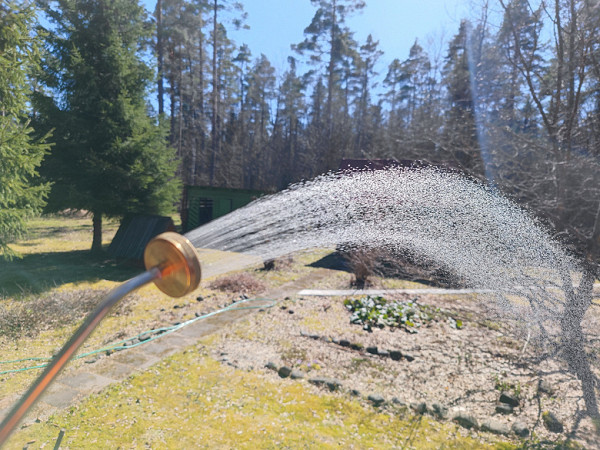
Watering «shower» nozzle
Care
The most important thing to remember is that after each use, it is necessary to pour a sufficient amount of clean water through all parts of the device to completely wash the special solution used for spraying. At the same time, let us recall the obvious: if you used a sprayer with a canister, it should also be thoroughly rinsed several times. If you used a long hose, then it should also be rinsed well with water. To be sure, we sprayed 5 liters of water in both cases.
Our measurements
In all tests, except the practical ones, the sprayer was tested with ordinary tap water at a temperature of 20 °C.
First, we measured the time it took the sprayer to spray a 5-liter canister. As expected, depending on the type of nozzle and its settings, the time varied. For convenience, we compiled all the data into a table and, for greater accuracy, even measured the amount of water remaining at the bottom of the canister after the water stopped coming out of the nozzle.
| Spray type | Filled, ml | Left at the bottom, ml | Spray time, min:sec | Productivity, ml/sec |
|---|---|---|---|---|
| sprayer, wide cone | 5000 | 48 | 10:50 | 8 |
| sprayer, narrow cone | 5000 | 67 | 08:50 | 9 |
| waterer | 5000 | 62 | 06:40 | 12 |
As you can see, the spray speed even depends on the settings of the cone, and the “shower” head consumes water the fastest. This is what we decided to use in the next test to find out how long the sprayer can work from a full battery charge and how much liquid it will pump during this time.
We took a long hose, a regular 12-liter bucket, poured 10 liters of water into it, then started the sprayer with a shower head and added water in 5-liter portions as needed. When the sprayer stopped, we measured the amount of water remaining in the bucket. The results were as follows:
- The sprayer worked for 2 hours 39 minutes, while the charge indicator turned red at around 2 hours 20 minutes.
- During this time, 111 liters of liquid were sprayed.
- The performance, as in the previous test with a similar nozzle, was 12 ml/s.
To be honest, we were amazed: 22 canisters per charge! We would have been tired sooner!
The time to fully charge the device from a completely discharged state was 3.5 hours. This is significantly longer than the 2.5 hours promised on the website, but perhaps we were “unlucky” with charging. If the device supports one of the fast charging protocols, it would be logical to indicate which one in the documentation.
Practice tests
What kind of “practical tests” can there be for a garden sprayer? Artificially plant insects and bacterial cultures on bushes, treat them and observe the result? Taking into account the variability of weather conditions, the repeatability of such an experiment will be highly doubtful.
Therefore, in this case, practical tests, in contrast to precise laboratory tests, served rather as a method of accumulating observations for the “Operation” section and as an illustration of the belated arrival of the St. Petersburg spring on our summer cottage;)
5 liters of Bordeaux mixture, 4 bushes and a difference of a little less than a month — from May 1 to May 25.
As you can see, life is good — the bushes are lucky. Let's hope that this is also thanks to the sprayer.
A detailed study of the leaves and emerging inflorescences showed that none of the treated plants contained larvae, insect-damaged leaves or any parasites. That is, we were able to process the plants evenly and efficiently.
In principle, 111 liters of liquid from one charge is enough to process a huge number of bushes or trees, or a rather large field. The sprayer can be used for any task that requires irrigation: watering delicate peonies, spraying animals with insecticides — or even organizing a fine shower for the whole family on hot days in the country.
conclusions
Testing the GPT DF-B5Li battery garden sprayer turned out to be extremely interesting. Particularly noteworthy is the fact that the initial almost complete skepticism towards the device by the end of testing was replaced by equally complete delight.
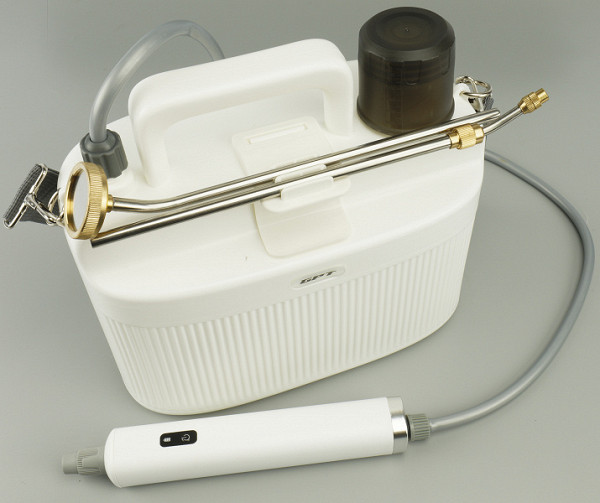
At the very beginning, we were amazed by laboratory tests: the operating time and the amount of liquid pumped through the device were truly impressive. Then came the turn of practical tests, and we found that using the device is convenient: the hand hardly gets tired, the adjustable nozzle is perfectly customizable, allowing you to achieve the desired effect, and the volume of the standard canister is optimal both for wearing on the shoulder and for the time of use.
In general, with the exception of a few minor comments, the device can be safely recommended even to owners of a fairly large garden.
Pros:
- simple and convenient design
- the presence of both a 5-liter tank and a long hose for working with large-volume vessels
- two nozzles, one of which is adjustable
- very impressive run time on a fully charged battery
Minuses:
- The remaining charge indicator could be more informative
- Full charging time may vary greatly from stated

